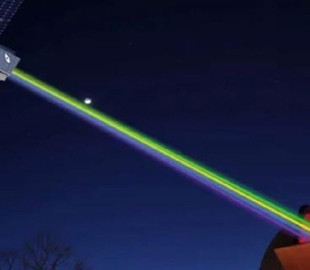
NASA aims to put an orbit around the Earth "artificial star" until 2029. This tiny satellite will not be visible to the human eye, but will be of great importance for the study of the cosmos.
The artificial star Landolt is named after the late astronomer Arlo Landolt, who created star brightness catalogs, writes Interesting Engineering.
This shoebox-sized satellite, equipped with eight lasers, will orbit Earth at an altitude of 22,236 miles, mimicking a real star for telescopes. Its creation is planned to cost $19.5 million.
The artificial star will remain stationary in a certain location over the United States during its first year in space.
This tiny satellite will help solve the problem of studying distant stars, exoplanets and even dark energy
When starlight passes through the Earth's atmosphere, part of it is absorbed. This makes it difficult for astronomers to determine the real brightness of stars, especially those that are far away.
Currently, astronomers rely on certain types of stars, called "standard candles", to measure the distances and brightness of other stars. However, these data are not as accurate as scientists need.
This is where a new mission comes into play, which will be able to provide more accurate measurements. Scientists will be able to adjust their telescopes to account for the atmospheric dimming effect by comparing Landolt's known brightness with real stars. They will be able to measure the brightness of stars, both dim and distant galaxies. This calibration at a known wavelength and laser power will eliminate the influence of atmospheric filtering of light and allow scientists to significantly improve measurements,  ;— said Piotr Pachowicz, associate professor at George Mason University.
In addition, these improved data will help answer several unanswered questions in astrophysics, such as the expansion of the universe and supernova explosions.
The artificial star will have eight lasers that will emit light at a precisely controlled rate, measured in photons (particles of light) per second. Scientists know exactly how bright Landolt is. This will pave the way to developing "new star luminosity catalogs.
The data will also help them better understand the characteristics of stars, surface temperatures and the planet's suitability for life.

